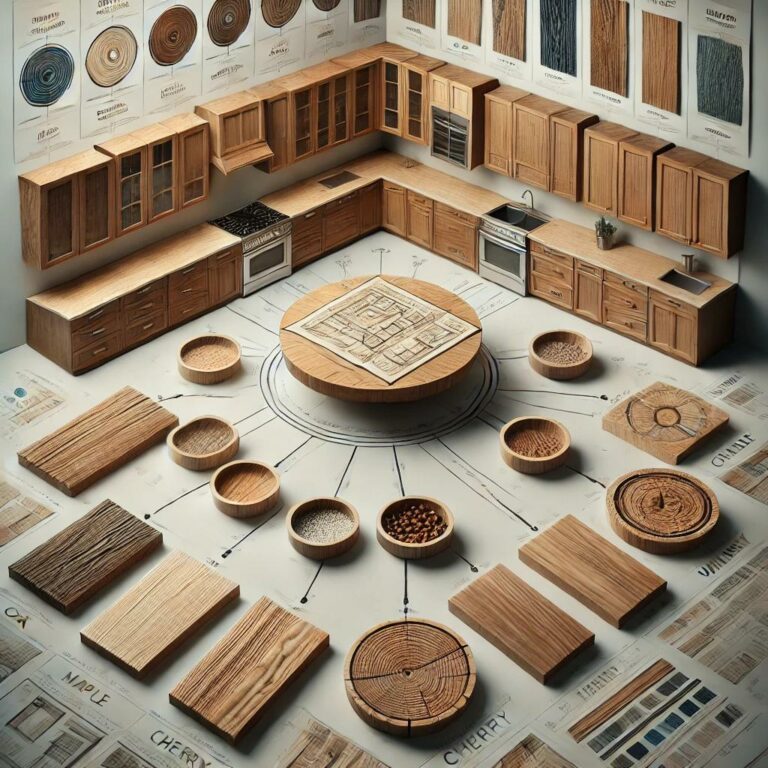Wood selection plays a crucial role in the appearance, durability, and overall quality of custom cabinets. With so many wood species available, choosing the right one can feel overwhelming. Each type of wood has unique characteristics that influence grain patterns, strength, and how well it holds stains or finishes. In this guide, we’ll break down the best wood options for custom cabinetry and help you determine which one suits your style and needs.
Before deciding on a wood species, consider these factors:
– Durability: Some woods are harder and more resistant to dents and scratches.
– Grain Pattern: The grain adds texture and character to cabinets, influencing the final look.
– Finish and Stain Compatibility: Certain woods absorb stains differently, affecting color richness.
– Cost: Exotic hardwoods are more expensive, while domestic woods offer budget-friendly alternatives.
Oak is a strong, durable, and highly versatile wood commonly used for cabinetry. It comes in two varieties: red oak, which has warm tones, and white oak, which is more neutral with a finer grain.
– Pros: Extremely durable, great for staining, prominent grain pattern.
– Best for: Traditional, rustic, and farmhouse-style kitchens.
Maple is a popular choice for custom cabinets due to its smooth grain and ability to take light or dark stains beautifully. It’s often used for painted cabinets because of its fine texture.
– Pros: Hard, resistant to dents, takes stain well.
– Best for: Modern and transitional designs.
Cherry wood features rich, warm tones and a smooth grain that deepens in color over time. It’s known for adding a luxurious feel to cabinetry.
– Pros: Ages beautifully, smooth grain, elegant look.
– Best for: Traditional and high-end kitchens.
Walnut is a premium wood with dark, rich tones that create a sophisticated look. Its natural grain variations add a unique touch to every cabinet.
– Pros: Elegant, luxurious appearance, naturally dark.
– Best for: Luxury and contemporary designs.
Hickory is one of the hardest domestic woods, featuring dramatic grain variations that add character. It’s perfect for rustic or country-style kitchens.
– Pros: Extremely durable, unique grain patterns.
– Best for: Rustic and farmhouse kitchens.
Alder is a softer hardwood with a uniform grain, making it an excellent choice for distressed or antique-style cabinetry.
– Pros: Easy to stain, warm tones, smooth grain.
– Best for: Vintage and traditional cabinetry.
Plywood and MDF: Engineered woods like plywood and MDF (medium-density fiberboard) are commonly used for cabinet interiors due to their stability and affordability. MDF is ideal for painted cabinets as it eliminates visible grain lines.
Exotic Woods: Woods like teak, mahogany, and zebrawood offer a unique look but come at a premium price. These are often used in high-end, custom luxury cabinetry.
Choosing the right wood for your custom cabinets depends on your style, budget, and durability needs. Whether you prefer the rich warmth of cherry, the rustic charm of hickory, or the modern elegance of walnut, each wood type offers distinct benefits. For expert guidance, consult a cabinetry professional to ensure your selection complements your home’s overall design.
